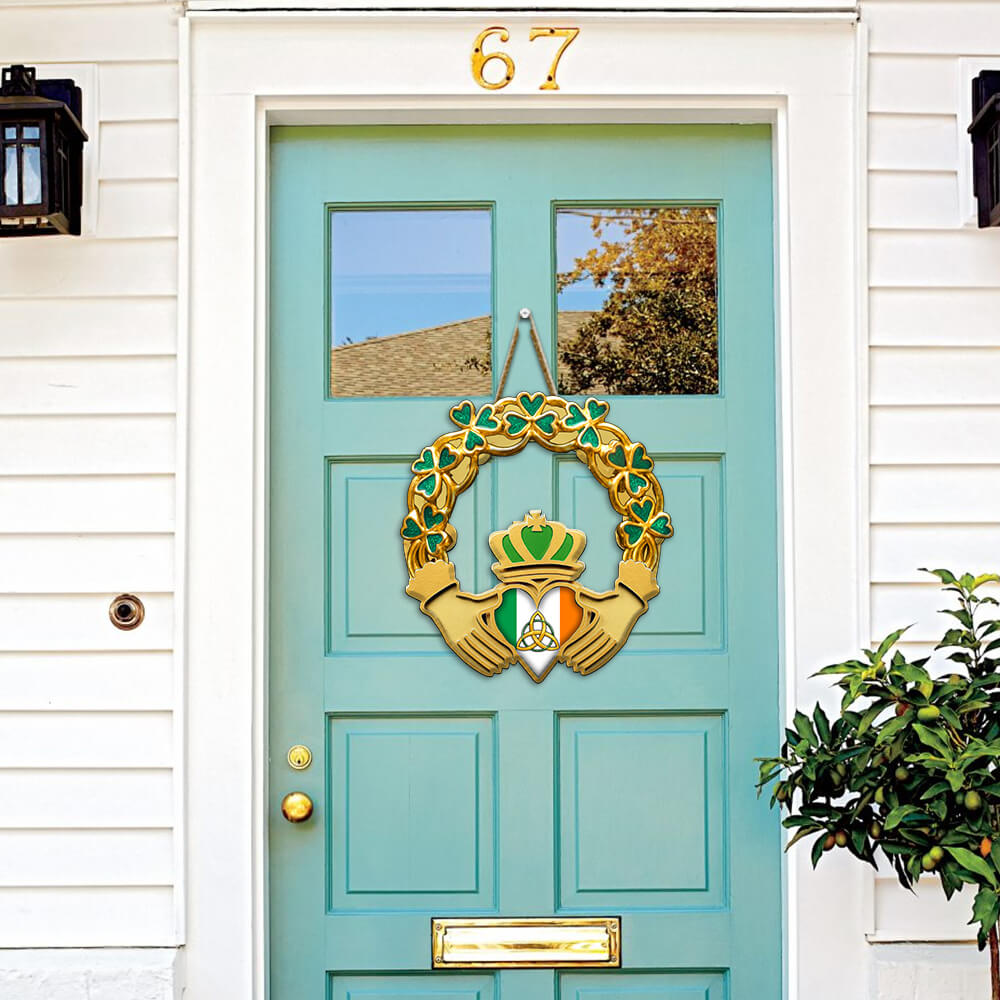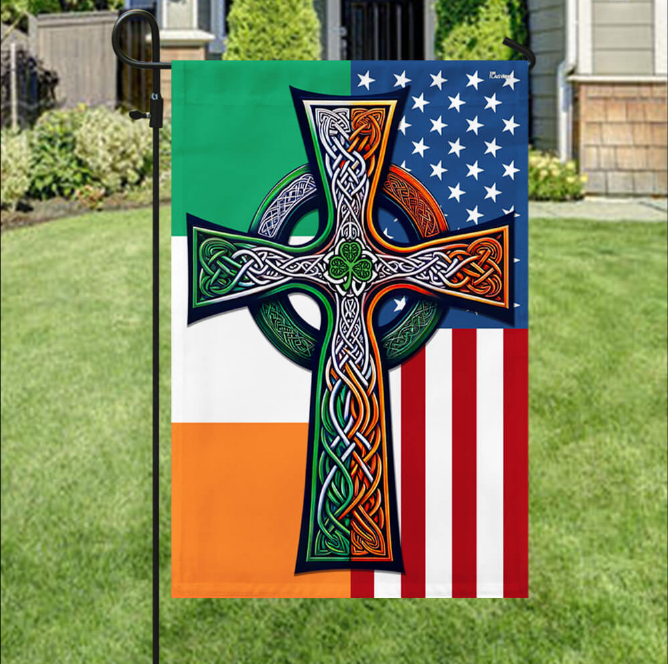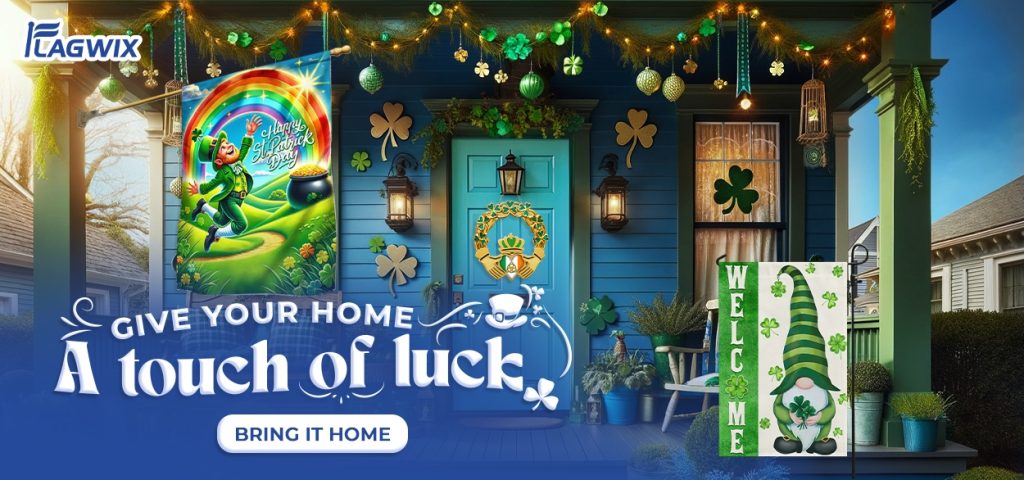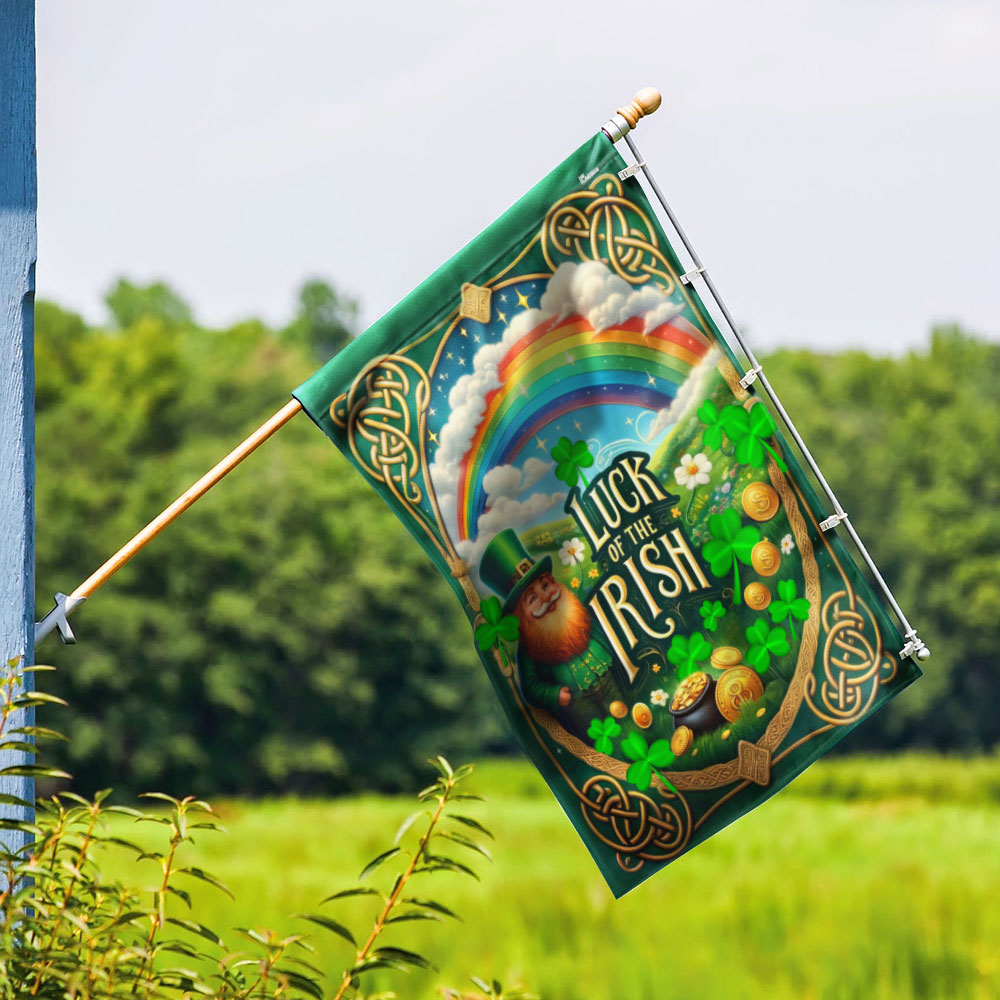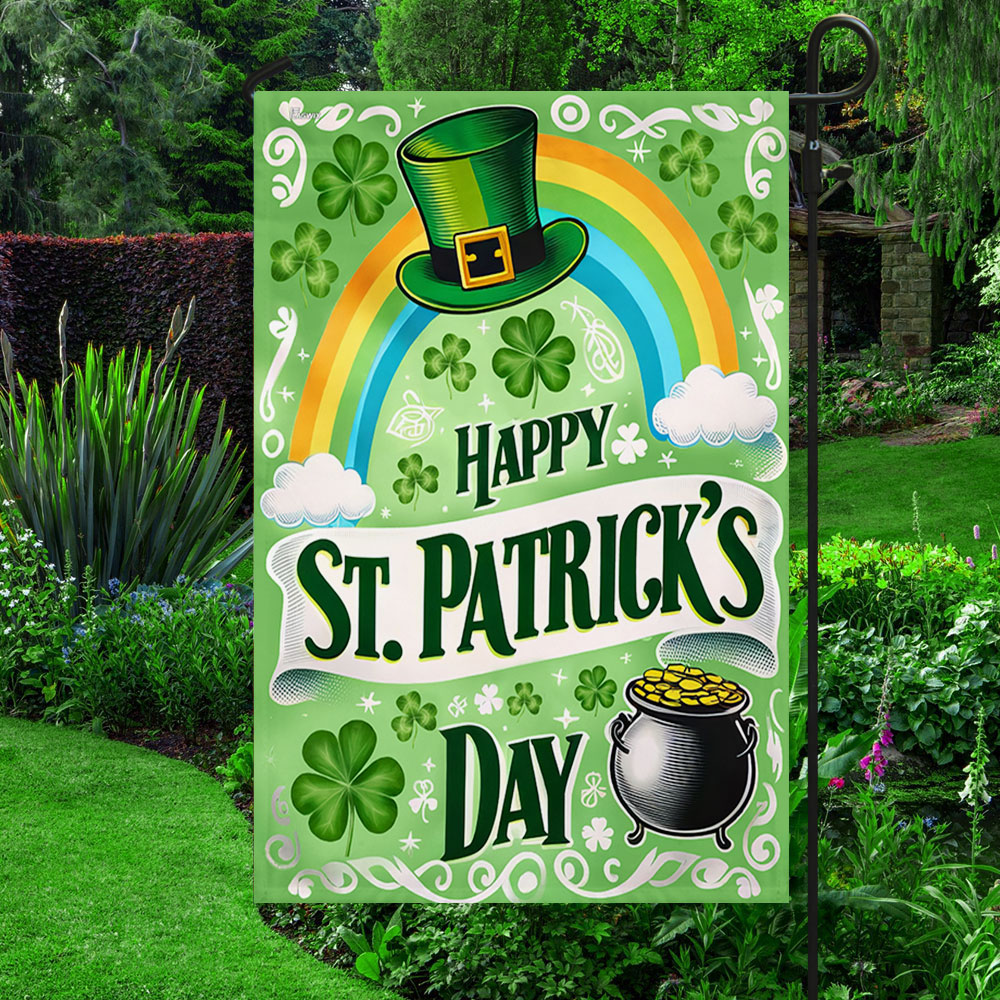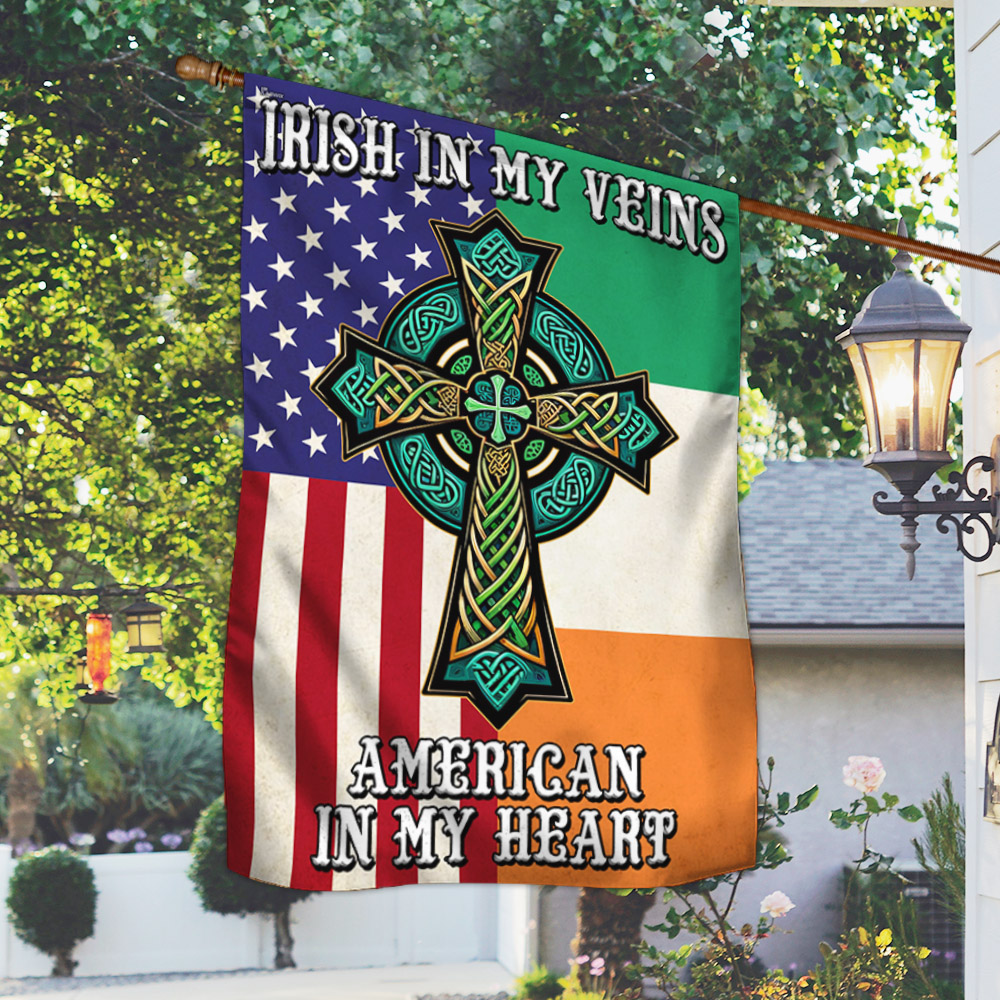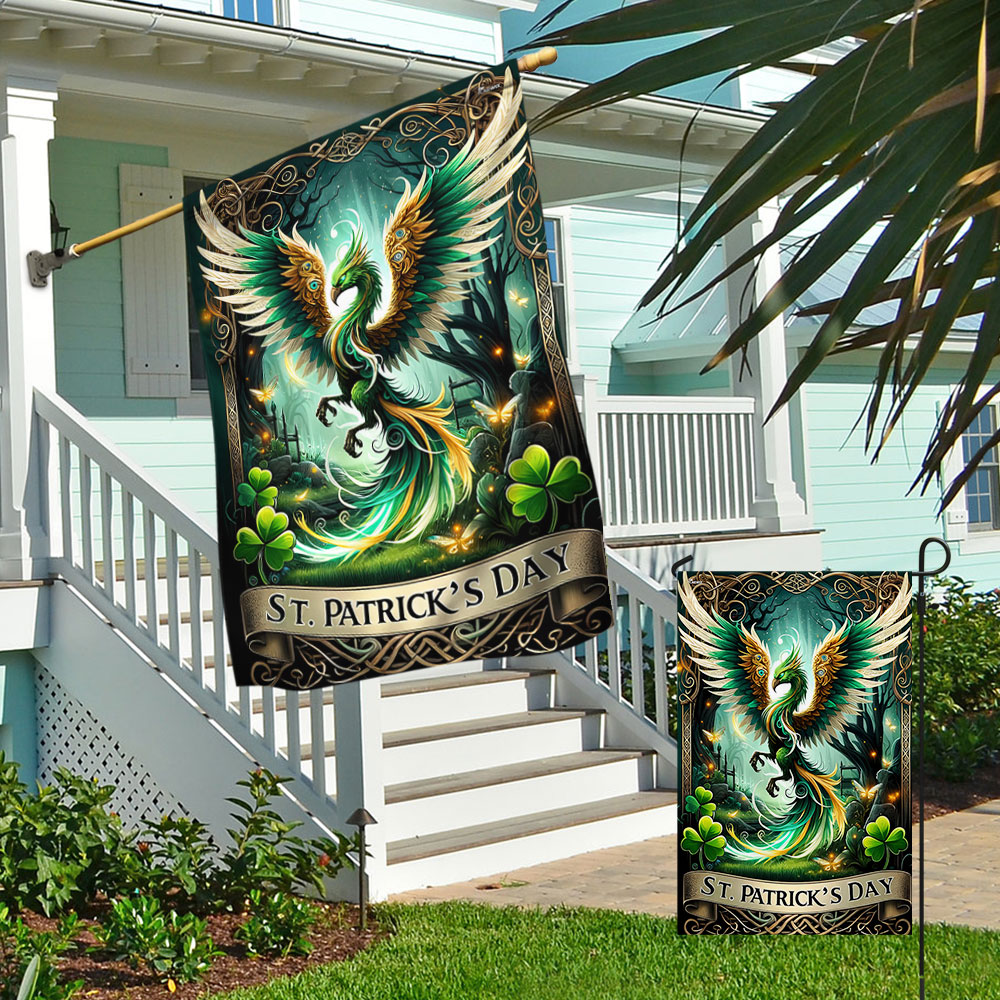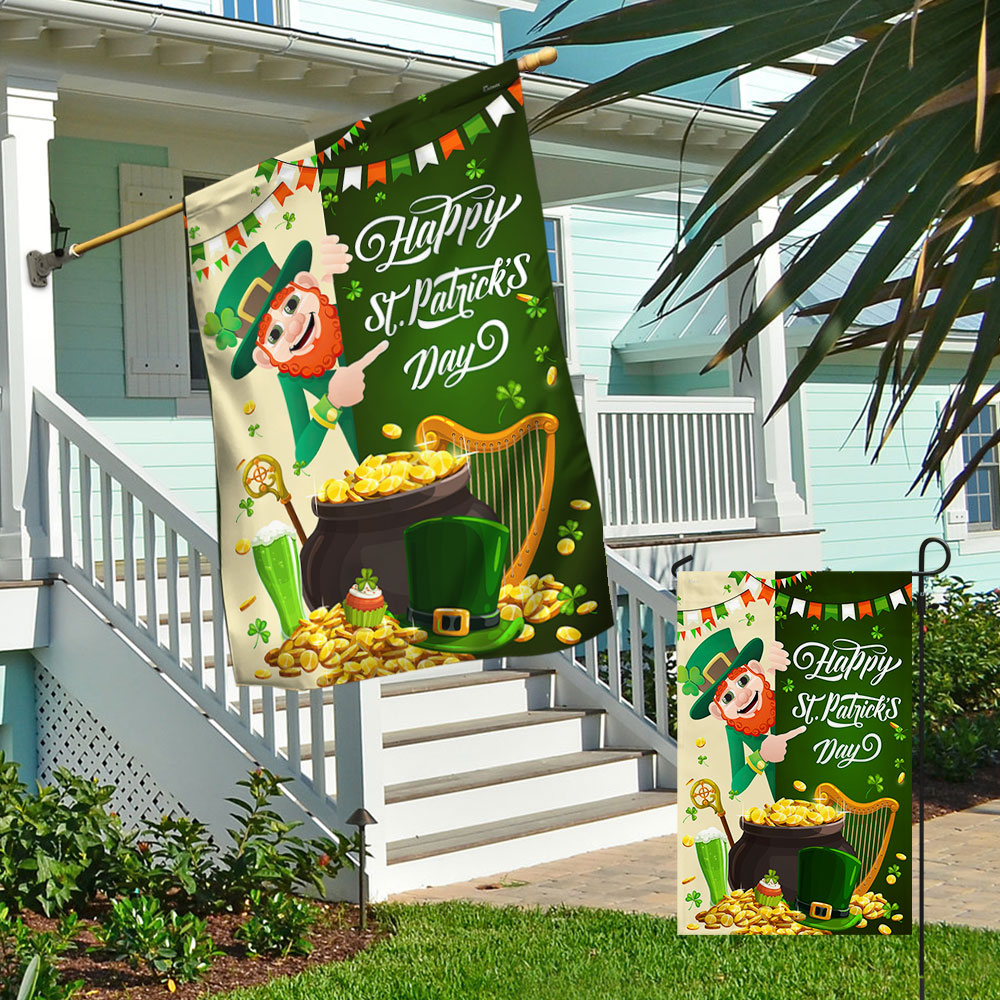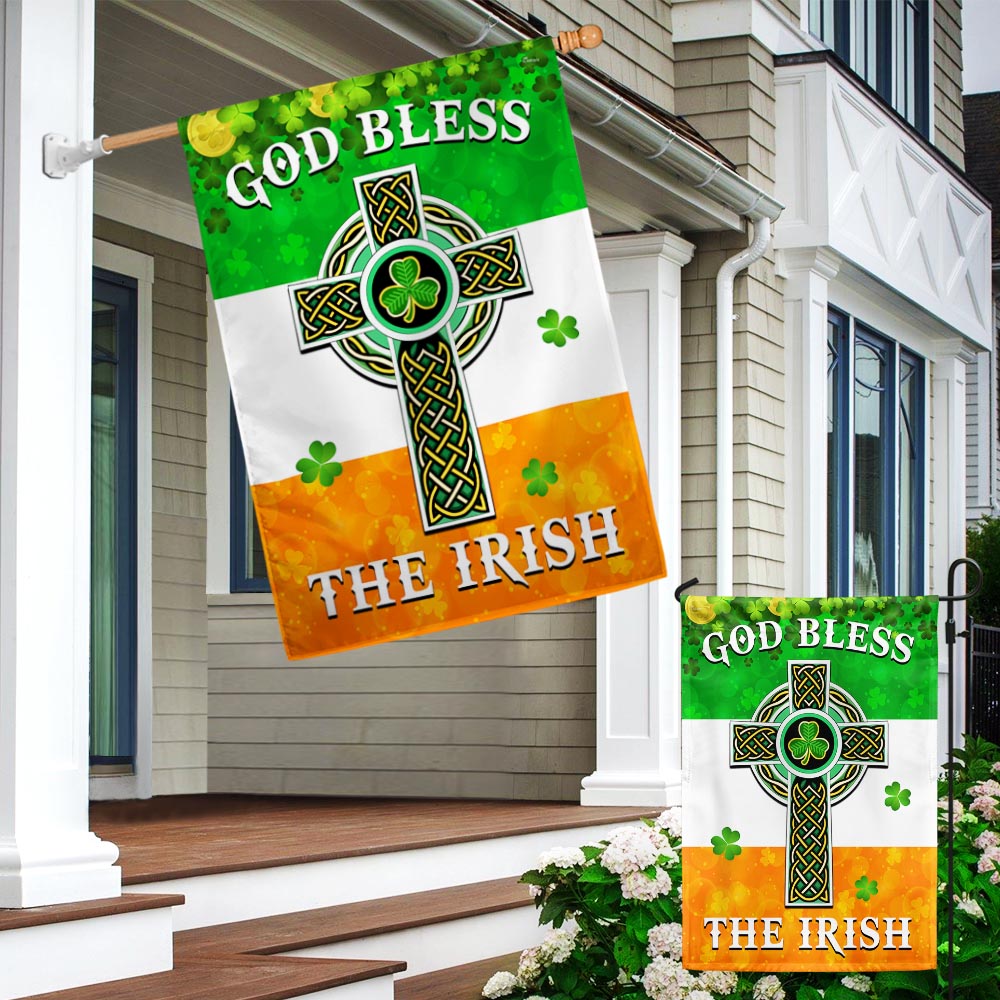St. Patrick’s Day, celebrated annually on March 17, is often marked by festive parades, green attire, and joyful gatherings. However, beyond the celebrations lies a profound spiritual meaning deeply rooted in Christian faith and Irish history. This day commemorates St. Patrick’s mission to spread Christianity throughout Ireland, reflecting themes of renewal, faith, and cultural identity. Traditional symbols and modern St. Patrick’s Day decor both serve as reminders of the holiday’s deeper significance. Let’s uncovering the St. Patrick’s Day Spiritual Meaning.
Contents
- 1 Symbols of St. Patrick's Day and St Patrick's Day Spiritual Meaning
- 2 The Life of St. Patrick and His Return to Ireland
- 3 Why We Celebrate on March 17: The St. Patrick's Day Spiritual Meaning Behind the Date
- 4 The Shamrock to Explain the Holy Trinity
- 5 How St. Patrick's Day Reflects Christian Faith
- 6 Get Inspired by The Symbols of St Patrick's Day
- 7 What Are The Irish Traditions For St. Patrick's Day?
- 8 FAQs: Understanding the Spiritual Meaning of St. Patrick’s Day
- 8.1 1. What is the spiritual meaning of St. Patrick's Day?
- 8.2 2. Why is the shamrock associated with Christianity?
- 8.3 3. Why is green associated with St. Patrick's Day?
- 8.4 4. What is the religious significance of St. Patrick’s Day?
- 8.5 5. How does St. Patrick’s Day celebrate Christian faith today?
- 8.6 6. What role does the Irish flag play in St. Patrick's Day celebrations?
- 8.7 7. How is the Ireland and American flag used in Irish-American communities?
- 8.8 8. How does St. Patrick’s Day compare to Easter in Christian faith?
- 9 Bottom Line
Symbols of St. Patrick's Day and St Patrick's Day Spiritual Meaning
Green Shamrock
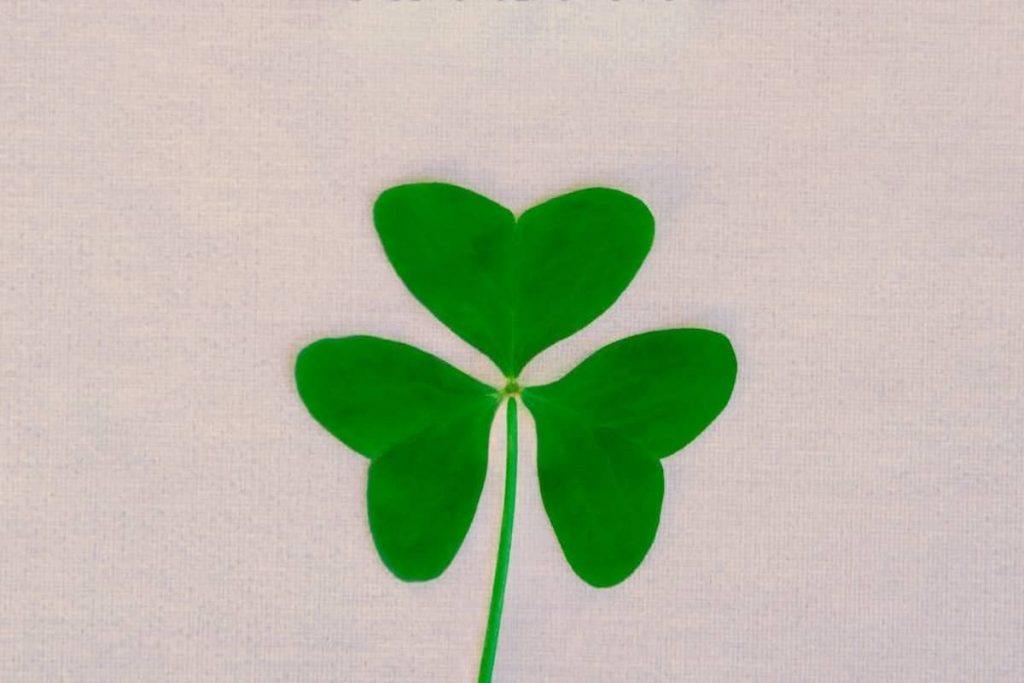
There are many legends and myths about where the Irish shamrocks originated. But one that has endured for many years comes from Ireland’s St. Patrick, who used it to teach about his faith to pagan Irish people.
Legend has it that he fashioned three shamrocks out of water reeds and told his students they represented: The Holy Trinity (Father, Son, and Holy Spirit).
The metaphor worked so well for the Irish that they have worshipped many triple deities until the modern-day.
Without a doubt, Shamrock has come to be Ireland’s national symbol since the 18th century. Besides the deep meaning in Christianity, the clover has three leaves for a reason: Each leaf represents hope, faith, and love.
Wearing green has become a hallmark of St. Patrick’s Day. This tradition stems from the Irish flag and the Irish tricolour, symbolizing life, renewal, and national pride. Green attire also connects to the lush landscapes of Ireland and the legacy of St. Patrick’s Christian teachings.
Celtic Leprechaun
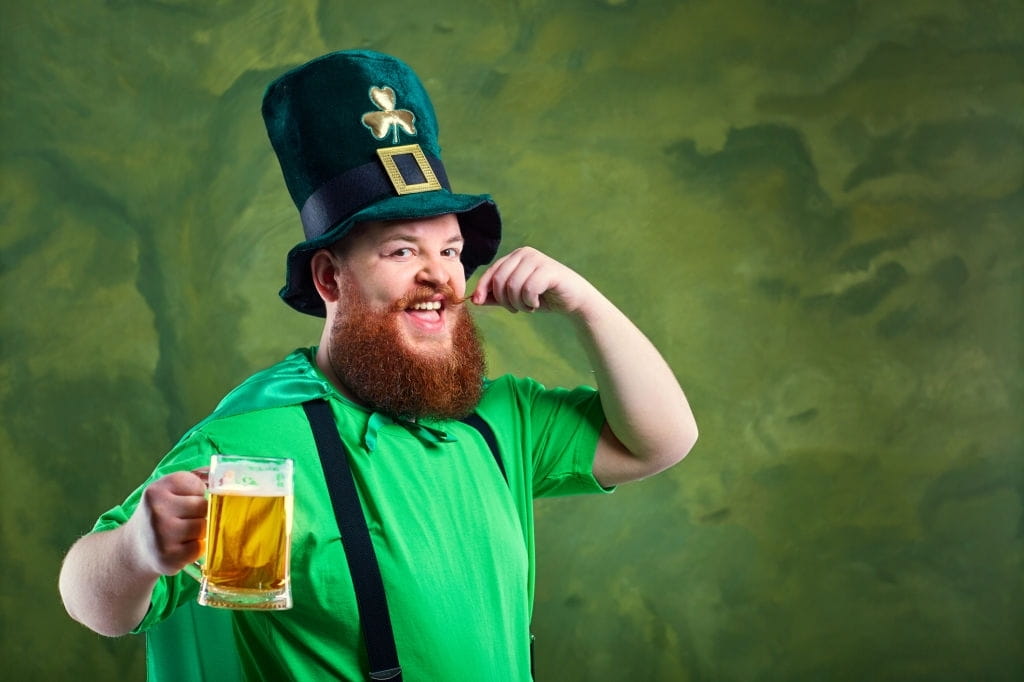
The leprechaun has nothing to do with Ireland. In fact, its origins can be traced back to England and Wales.
It starts from the fact that Ancient Ireland was inhabited by two groups of people, known as Gaels and Picts. While many symbols of today’s Irish culture were adopted from Celtic history and mythology, one that is widely used on St. Patrick’s Day is more likely a result of English colonization.
That being said, Leprechaun originally comes from an old English word for little man, making it a fairy-tale version of a troll or gnome (or maybe even JRR Tolkien).
It’s believed that leprechauns became associated with Irish folklore after settlers brought over their folktales.
The Rainbow and Pot of Gold: Blending Folklore with St. Patrick's Day Spiritual Meaning
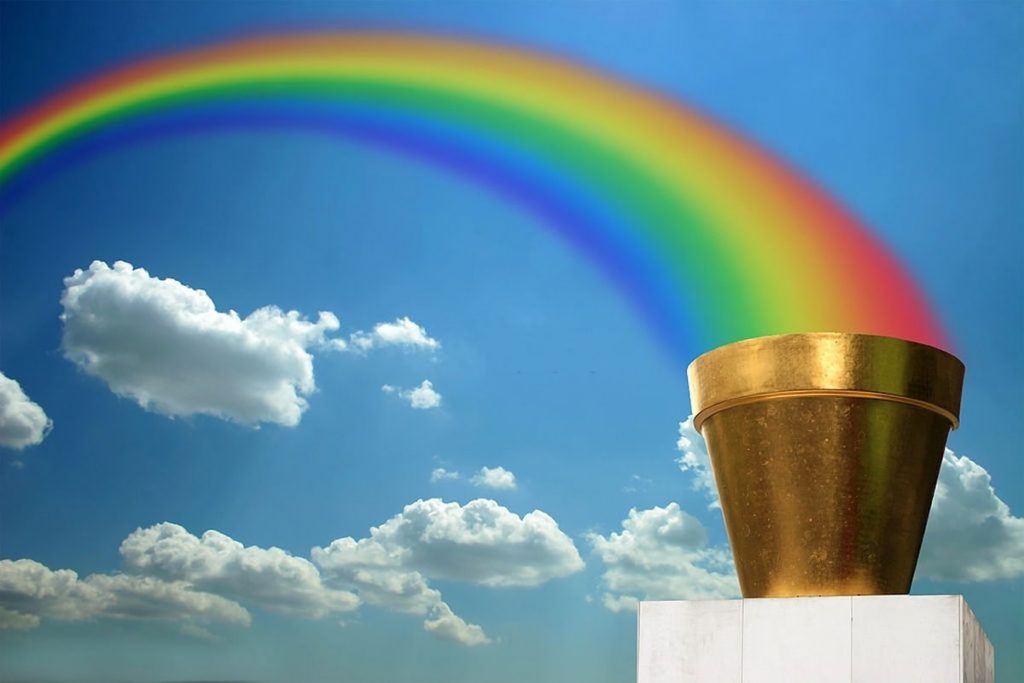
Spiritually, the rainbow represents God’s promise of protection. In Irish folklore, the rainbow leads to a pot of gold guarded by a leprechaun, blending faith and mythology. This colorful symbol remains a staple in St. Patrick’s Day decor, celebrating both legend and divine hope.
Since rainbows usually form after storms, it is also believed that rainbows appeared after St. Patrick drove away snakes from Ireland.
Besides, in Irish folklore, the rainbows are caused by fairies sprinkling dew into rivers and lakes so they can catch fish for feasts. The myth tells that there’s a Leprechaun holding a pot of gold at the end of the rainbow as well.
Gold Coins
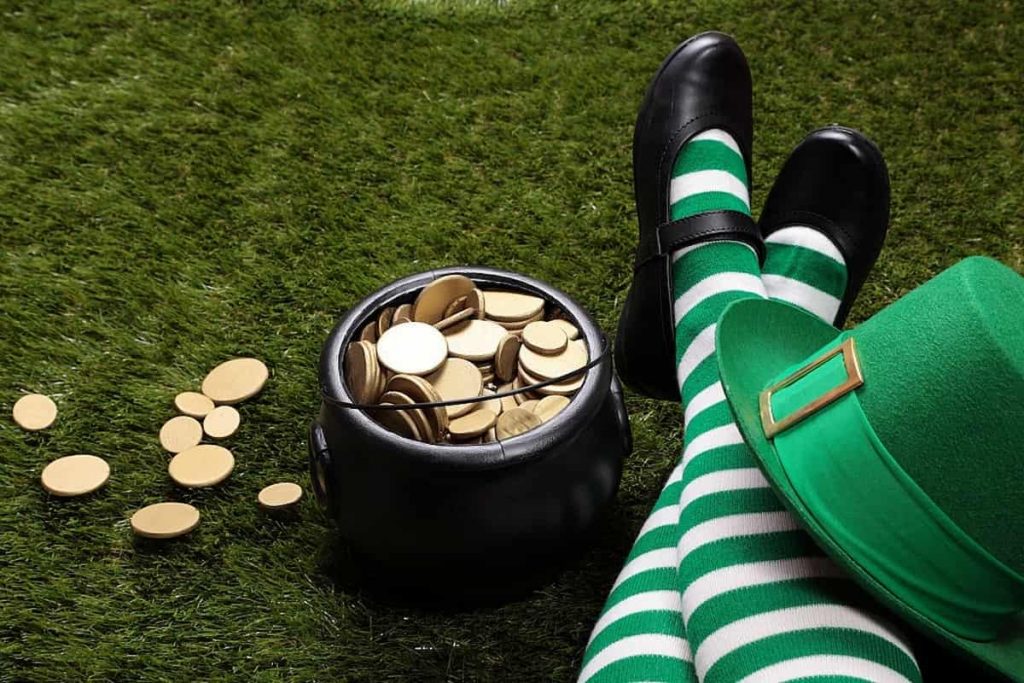
The story goes that St. Patrick had a vision of a herd of wild animals coming towards him during his time in Ireland. To ward them off, he lifted his staff over his head, and it miraculously turned into a flock of blackbirds which scared away all of the animals in sight. He kept some of these blackbirds for himself as pets but gave many more away to convert pagans to Christianity—which may explain why people have associated blackbirds with good luck ever since then.
Traditionally, Irish people will place one coin at each windowpane or at their door on St. Patrick’s Day to tribute St. Patrick and his gift of converting pagans. These are called St. Patrick’s Pence or lucky money.
Once someone receives lucky money, they should use it to make themselves feel lucky throughout St. Patrick’s Day, thus perpetuating its luckiness all day long.
Celtic Cross and Trinity Knot: Emblems of St. Patrick's Day Spiritual Meaning
The Celtic Cross and Trinity Knot are deeply tied to Ireland’s Christian heritage. These symbols embody the concept of the holy and eternal life. Today, they appear in various forms, from jewelry to St. Paddy’s Day decorations, reflecting Ireland’s blend of cultural and spiritual identity.
The Trinity Knot, or Celtic Triquetra, is a popular symbol of St. Patrick’s Day. Sometimes referred to as The Endless Knot, it is believed to be a representation of one god in three parts. The circle surrounding it represents wholeness or unity with all living things.
Today, some Christians wear trinity knots as a symbol of their faith and the patron saint of Ireland. Some also hang the symbol on their house’s front door as one of a St Patrick’s day door decorations or a sign to celebrate St Patrick’s Day.
Others incorporate the Celtic Knots in their tattoos, decor for St Patrick’s Day, Saint Patricks Day flags, etc.
Flags and St Patrick's Day spiritual meaning in Modern Celebrations
The Ireland flag, St. Patrick’s flag, and Irish American flag are prominently displayed during parades and events. In Irish-American communities, the blending of the Ireland and American flag signifies cultural pride and the shared heritage between the two nations.
🍀 Saint Patrick’s Day Flags – Fantastic Decorative Items To Get Your Home Ready For The Irish Day
The Life of St. Patrick and His Return to Ireland
St. Patrick, born in Roman Britain, was kidnapped by Irish raiders and enslaved in Ireland as a young man. After several years, he escaped but later felt a divine calling to return to Ireland. His mission was clear: to convert the Irish people to Christianity. St. Patrick’s return to Ireland was driven by his unwavering faith and dedication to spreading the concept of the holy, transforming Ireland’s spiritual landscape forever.
Why We Celebrate on March 17: The St. Patrick's Day Spiritual Meaning Behind the Date
March 17 marks the death of St. Patrick and is celebrated to honor his legacy. This date became a day of spiritual reflection and cultural celebration, blending Christian beliefs with Irish traditions. The Irish flag and Irish tricolour have since become powerful symbols in commemorating this day, symbolizing the unity and spirit of the Irish people.
The Shamrock to Explain the Holy Trinity
Legend has it that St. Patrick used the shamrock to explain the Holy Trinity to the Irish. Each of the shamrock’s three leaves represented the Father, the Son, and the Holy Spirit, making it an effective tool for teaching the Christian faith. This symbol of hope, faith, and love continues to appear in both religious practices and modern St. Patrick’s Day decor.
How St. Patrick's Day Reflects Christian Faith
St. Patrick’s legacy is rooted in his mission to spread Christianity. Modern celebrations reflect this through church services, religious symbols, and Christian-themed St. Patrick’s Day decor. His teachings continue to inspire spiritual reflection during this holiday.
Modern Traditions Rooted in Faith to continue the St. Patrick’s Day Spiritual Meaning
Today, many honor St. Patrick’s spiritual legacy by attending church services and visiting sites linked to his life. Displaying the Irish flag and St. Patrick’s flag during a happy Saint Patrick’s Day celebration connects participants to their faith and cultural heritage.
Get Inspired by The Symbols of St Patrick's Day
Dive into our St Patrick’s Day flag collection and choose the perfect pieces to make your St. Patrick’s Day more colorful and memorable. Here’s to a holiday filled with charm, luck, and a whole lot of green! Check for some St Patrick’s Day decorating ideas
🍀 Find Your Pot Of Gold With These Festive St Patrick’s Day Accessories
What Are The Irish Traditions For St. Patrick's Day?

Wearing green on St Patrick
St. Patrick’s color of choice was blue, but he probably would have worn green if it was available in his day. The St Patrick’s colors represent Ireland—and Irish heritage—and is universally recognized as one of St. Pat’s symbols.
The wearing of green on March 17th dates back to at least 1571 when Ireland’s Trinity College held a celebration for all students who graduated on March 17th during Holy Week (the week before Easter). All attendees wore green caps and gowns to honor St. Patrick’s efforts in bringing Christianity to Ireland.
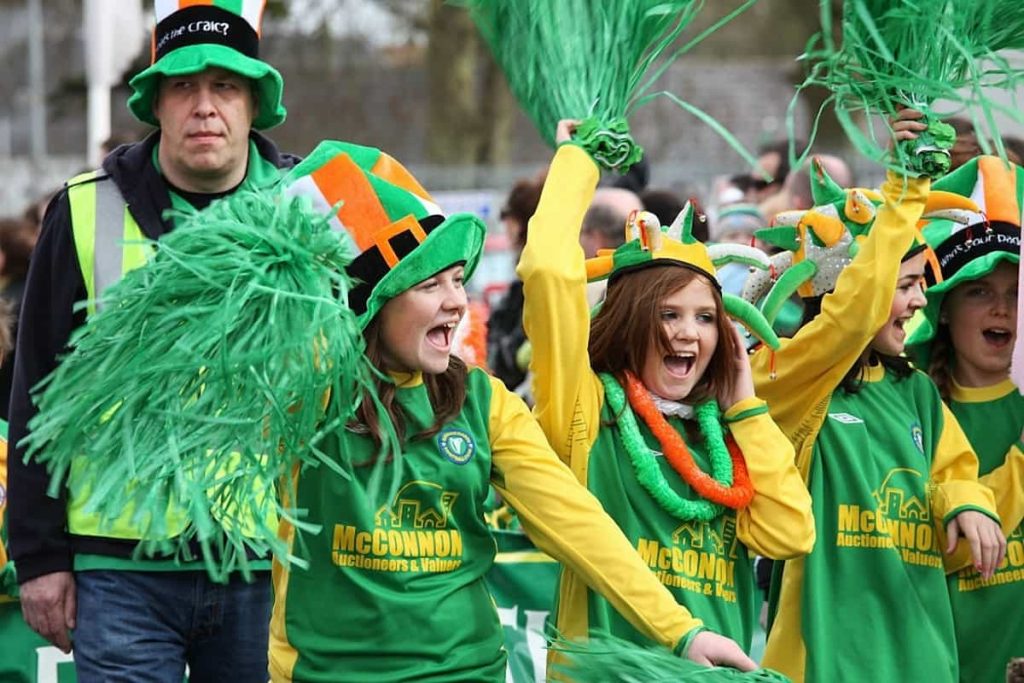
Parades
Perhaps one of the most well-known St. Patrick’s Day traditions is a parade. Specifically, a green-colored one that usually involves plenty of beer, bagpipes, dancing, shamrocks, and other elements that play up an Irish theme.
While it’s not clear exactly how parades got started (or when), they were already popular in Ireland during St. Patrick’s lifetime. Some people believe he might have instituted them himself as a way to keep young men busy on festival days. During his four-decade stay in Ireland from roughly 432 to 461 CE, St.
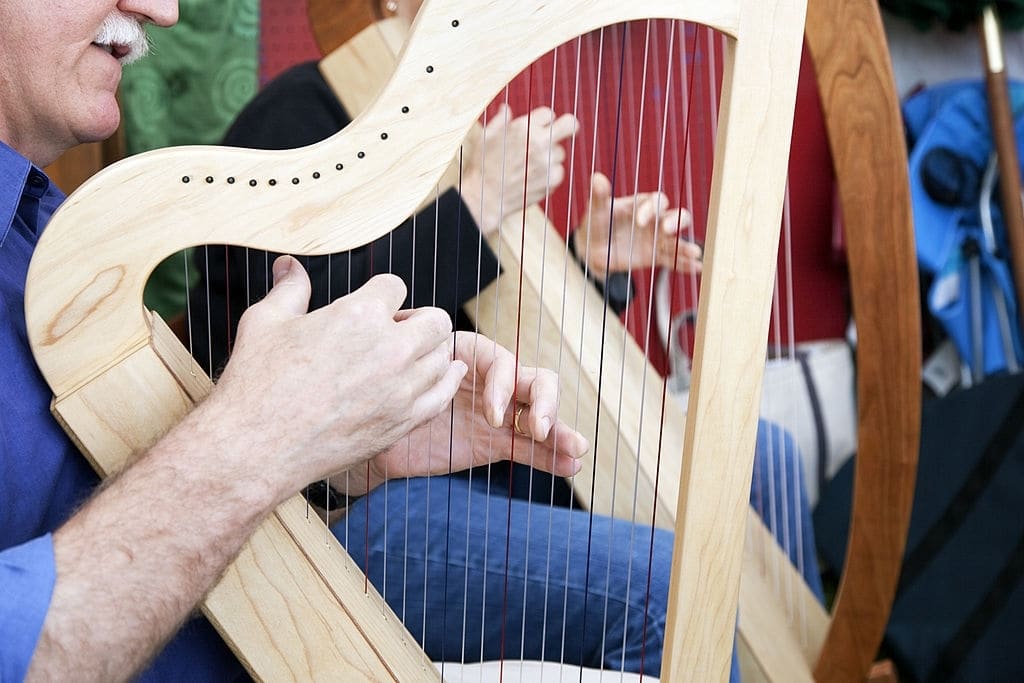
Irish Music
If you are in Ireland on St Patrick’s Day, you can’t miss listening to Irish music. The traditional music of Ireland has played a central role in Irish identity for centuries, as it expresses both regional and national St Patrick’s day characters. For some people, to listen to Irish music is like an invitation from St Patrick himself.
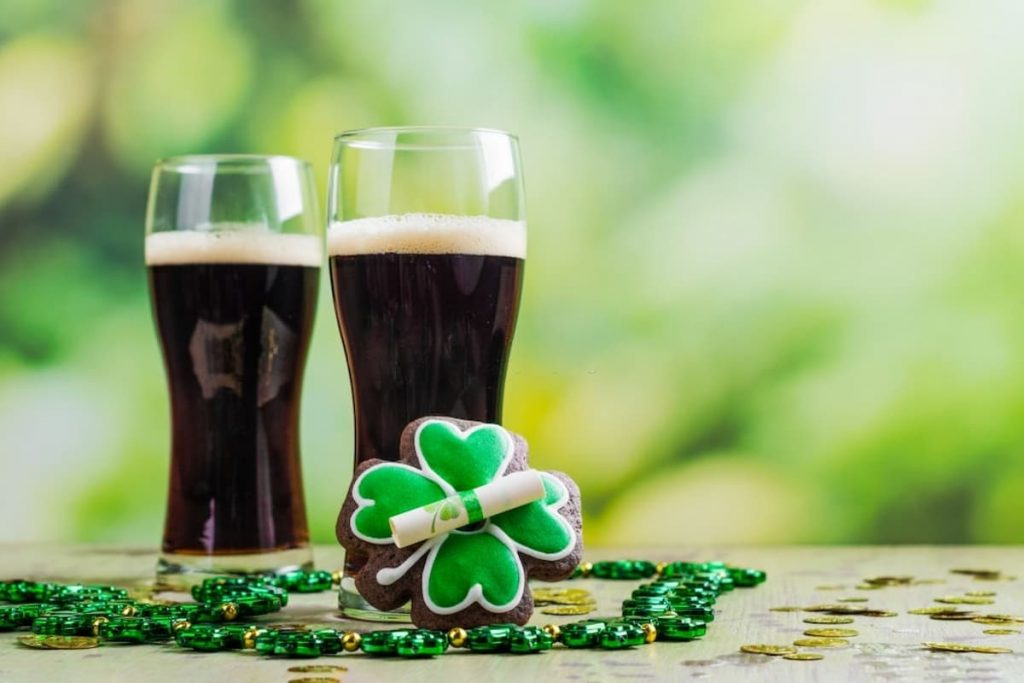
Dark Irish Stout
Legend has it that St. James first brought Christianity to Ireland in the form of a dark brew made from roasted barley seeds. It’s easy to see why Guinness would come to represent Irish heritage in some circles. Without it, there probably wouldn’t be many green clothes or even parades on St. Paddy’s day!
In fact, Guinness has such widespread appeal as an Irish symbol that non-Irish people often buy it for festivities like St. Patrick’s Day instead of drinking domestic beers.
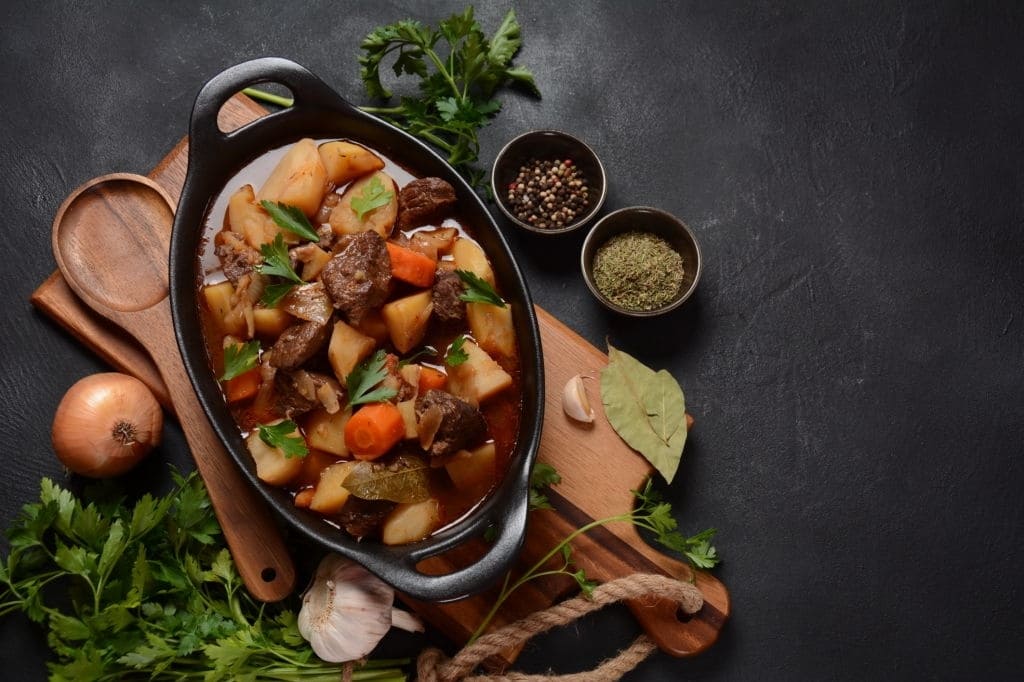
St Patty’s Day Food
Ireland is famous for its wide variety of fantastic food, which can add a little fun to your St. Patrick’s Day festivities. Of course, traditional dishes like Irish stew (made with lamb) or colcannon (mashed potatoes mixed with cabbage) are great options if you want to pay homage to Ireland itself.
If you aren’t feeling quite so adventurous, you can always have some corned beef and cabbage, which is one of America’s most well-known St. Patty’s day foods. It was first brought to America by Irish immigrants fleeing famine in Ireland in 1845.
Learn more about St. Patrick’s Day
FAQs: Understanding the Spiritual Meaning of St. Patrick’s Day
1. What is the spiritual meaning of St. Patrick's Day?
It honors St. Patrick’s role in spreading Christianity throughout Ireland and reflects themes of faith and renewal.
2. Why is the shamrock associated with Christianity?
St. Patrick used the shamrock to explain the Holy Trinity—the Father, the Son, and the Holy Spirit. This made the concept more relatable to the Irish people, strengthening their understanding of Christian doctrine.
3. Why is green associated with St. Patrick's Day?
Green represents life, renewal, and Irish identity, influenced by the Irish flag.
4. What is the religious significance of St. Patrick’s Day?
St. Patrick’s Day is a Christian feast day honoring St. Patrick, the missionary who brought Christianity to Ireland. His teachings, symbolized by the shamrock and the Celtic Cross, helped convert the Irish to Christianity.
5. How does St. Patrick’s Day celebrate Christian faith today?
Through church services, pilgrimages, and religious-themed St. Patrick's Day decor.
6. What role does the Irish flag play in St. Patrick's Day celebrations?
It symbolizes national pride and spiritual unity.
7. How is the Ireland and American flag used in Irish-American communities?
It honors shared cultural and spiritual heritage.
8. How does St. Patrick’s Day compare to Easter in Christian faith?
Both St. Patrick’s Day and Easter are deeply rooted in Christianity. St. Patrick’s Day focuses on spreading the Gospel, while Easter celebrates Christ’s resurrection and salvation. Many believers honor both holidays as part of their spiritual journey.
Bottom Line
St. Patrick’s Day is more than a festive occasion—it is a day to reflect on spiritual growth, faith, and heritage. By understanding St Patrick’s Day spiritual meaning, Christian roots and embracing its symbols, such as the Irish flag and shamrock, we can celebrate this holiday in a way that honors both tradition and belief.
Explore the spiritual side of St. Patrick’s Day by incorporating symbols of faith into your celebrations. Share your St. Patrick’s Day decor featuring the Irish American flag and celebrate a happy Saint Patrick’s Day that honors both culture and faith. Happy St. Patty’s Day everyone!
- Explore St Patrick’s Day Flags & Decor
- Explore more decorative flags and holiday flags at Flagwix.
✝️ Want to embrace more faith-filled traditions? Check out our collection of heartfelt religious Easter wishes to share God’s blessings this Easter season!
Explore the Easter Decor Collection
